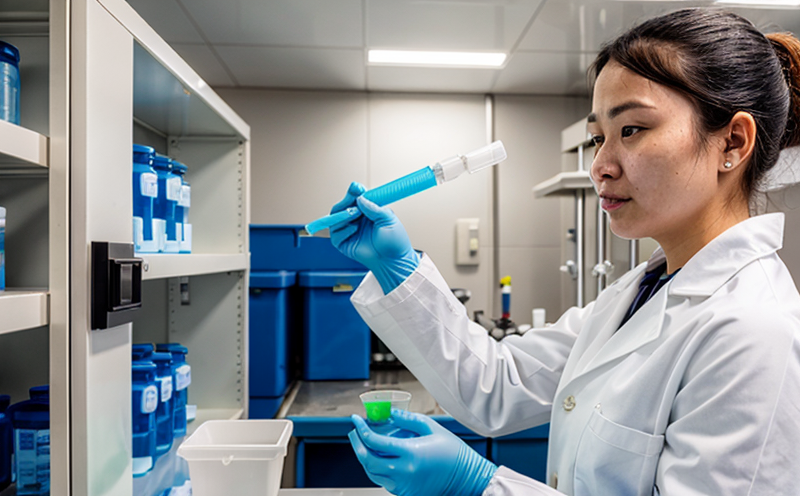USP Endotoxin Method Suitability Testing
The United States Pharmacopeia (USP) endotoxin method suitability testing is a critical step in ensuring the quality, safety, and efficacy of pharmaceutical products. Endotoxins are lipopolysaccharides found primarily in Gram-negative bacteria, and their presence can cause severe reactions in humans, including fever, shock, and even death.
This testing ensures that the manufacturing process for sterile drugs is free from endotoxin contamination. The USP method relies on a chromogenic substrate that changes color when it reacts with endotoxins present in the sample. This reaction is measured using a photometer, which quantifies the endotoxin levels.
The suitability test involves several steps to validate the performance of the testing equipment and reagents used in the endotoxin assay. These steps include:
- Calibration of the endotoxin detector using USP reference materials (EndoTest® or EndoKit).
- Preparation of a blank solution to ensure no background endotoxin levels are present.
- Dilution and injection of test samples into the photometer.
- Recording absorbance readings at specific wavelengths.
- Evaluation of the calibration curve, which should demonstrate linearity over the range of interest.
The results are compared to established acceptance criteria outlined in USP USP General Chapter <1231>. A successful suitability test ensures that the method can accurately and reliably detect endotoxins within the specified limits.
The importance of this testing cannot be overstated. In the pharmaceutical sector, ensuring product safety is paramount. Endotoxin contamination can lead to severe side effects in patients, which underscores the necessity for rigorous quality control measures. Suitability tests are a cornerstone of these efforts, providing assurance that the endotoxin detection method is fit for purpose.
For R&D engineers and compliance officers, understanding the intricacies of this testing is essential. Properly conducted suitability tests can prevent costly recalls and lawsuits. For quality managers and procurement specialists, ensuring that suppliers meet USP standards is a key part of maintaining product integrity.
Scope and Methodology
The scope of USP endotoxin method suitability testing encompasses several key areas:
- Validation of the photometer's performance using USP reference standards.
- Evaluation of reagent stability over time to ensure consistent results.
- Assessment of the dilution process and its impact on endotoxin concentration.
- Determination of the suitability of the method for detecting low levels of endotoxins, which are critical in sterile drug manufacturing.
The methodology involves several steps to ensure that the testing is both accurate and reproducible:
- Calibration: The photometer is calibrated using USP reference standards (EndoTest® or EndoKit) before each batch of samples is tested.
- Blank Solution Preparation: A blank solution is prepared to ensure that there are no endotoxins present in the system, which could interfere with the test results.
- Dilution and Injection: Test samples are diluted according to the manufacturer's instructions and injected into the photometer for analysis.
- Data Analysis: The absorbance readings are recorded and compared to the calibration curve. The slope of this curve should be within ±10% of 1.667 ± 0.052, indicating that the method is suitable for endotoxin detection.
The acceptance criteria for a successful suitability test are stringent and align with USP <1231>. The slope of the calibration curve should be within the specified range, and there should be no significant drift in absorbance readings over time. These criteria ensure that the testing method is reliable and can consistently detect endotoxins at low levels.





